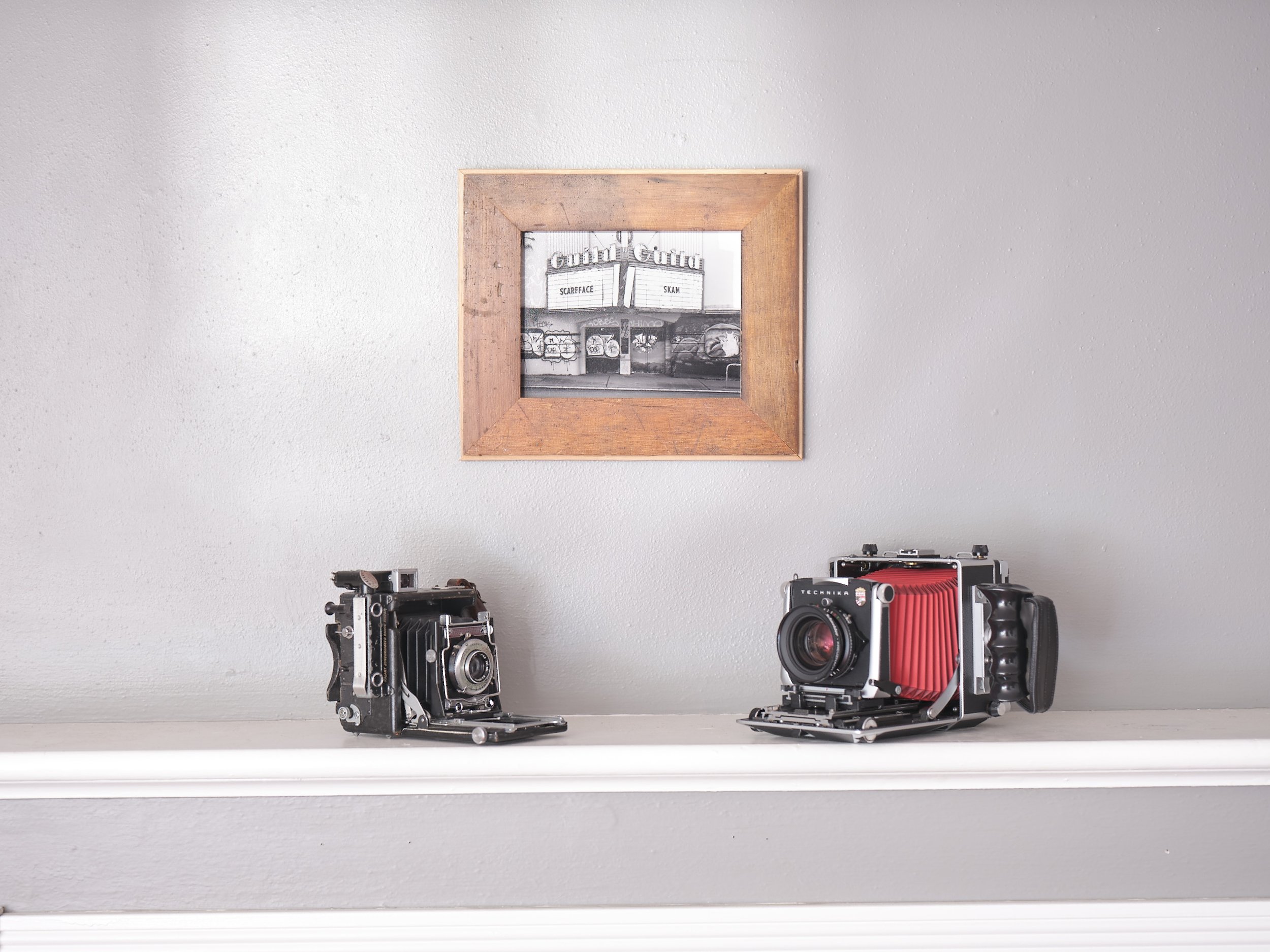Behind the lens.
I am fascinated by the technical intricacies of film, specifically large format. Most of my cameras are older than I and I often think about their history. Where have they been and what have they captured?
I learned how to shoot analog photography at my first job in New York City working as Yorgo Alexopolous’ assistant. He lent me his 4x5 Graflex Speedgraphic with a box of 20-year-expired Ektachrome. I tucked it in my backpack and carried that kit everywhere from Brooklyn to mountain peaks in Montana. Those first slides are still some of my favorites and what sparked my interest.
I am often asked why analog and for me the capture process is meditative. I find that when it takes 20 minutes to set up and take a photo, I notice details about the scene I hadn’t when I decided to stop. Insects and plants or details in the craftsmanship of a building. I often change the shot after spending time in the environment or decide to bail on the photo altogether. You can have a good day of photography and not take any photos.
I have always been inspired by Eugène Atget, Berenice Abbott and Walker Evans. Atget is the only reason we have photos of Paris before Haussmann’s renovation in the 19th century. Abbott was inspired by Atget and followed a similar path photographing Manhattan during its industrialization. Evans documented much of the US during the Great Depression under an FSA contract.
Handmade Frames.
I craft my frames almost entirely with hand tools in my living room on a workbench made from reclaimed maple bowling alley. I make frames for my Vanishing Seattle prints using reclaimed flooring from around Seattle. I use sapele, black walnut and beech for my landscape prints. The hardwoods are finished with tung oil.
I start by cutting rough miters using an old craftsman miter box and carcass saw. I then use a guillotine style miter trimmer to clean up the edges, the trimming is crucial as a miter 0.1° off will result in a noticeable trapezoid.
For the reclaimed flooring I remove the back of the groove using a bull nose rabbet plane then square it off using a shoulder plane, this forms the rabbet for the acrylic and print. I have made some jigs to hold the flooring with the tongue in order to keep the flooring patina as intact as possible.
For the custom hardwood frames I use a low angle jack plane and no4 smoothing plane to make sure all sides are planar. I then use a combination plane to cut the rabbet followed by a clean up pass with a shoulder plane.
The pieces are then glued together followed by tung oil and 7-10 days of curing. Each frame takes about 6-10 hours to craft and each is unique.
Thank you for checking out my print site.
Jacob Berrier









